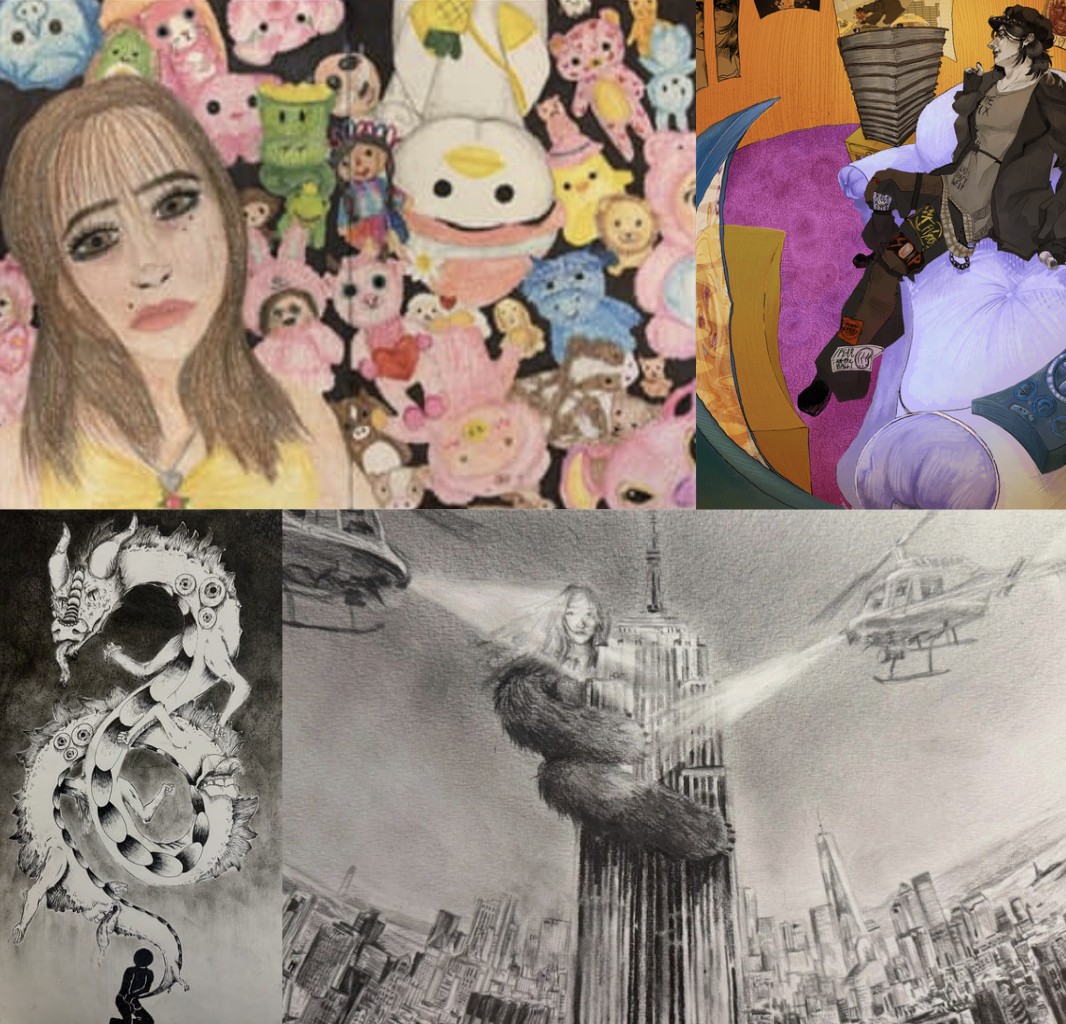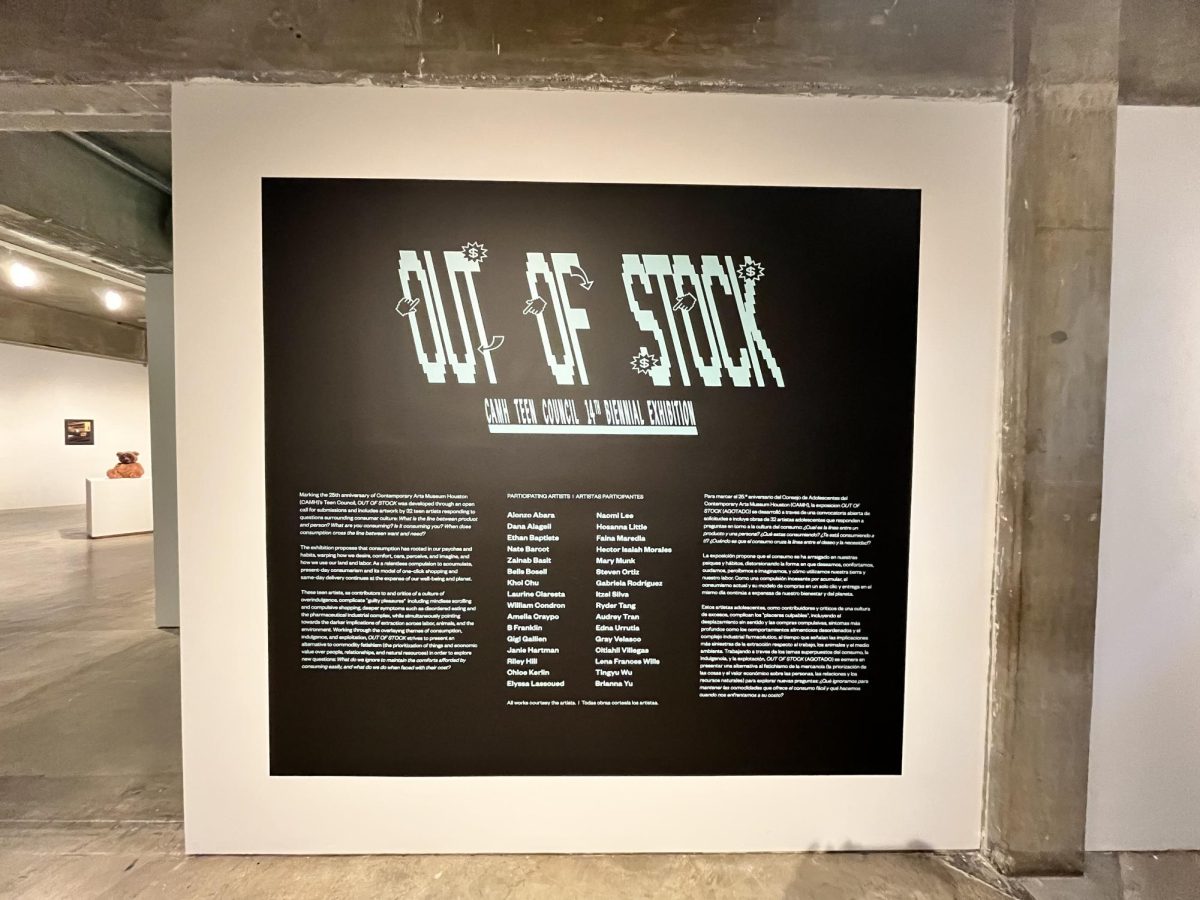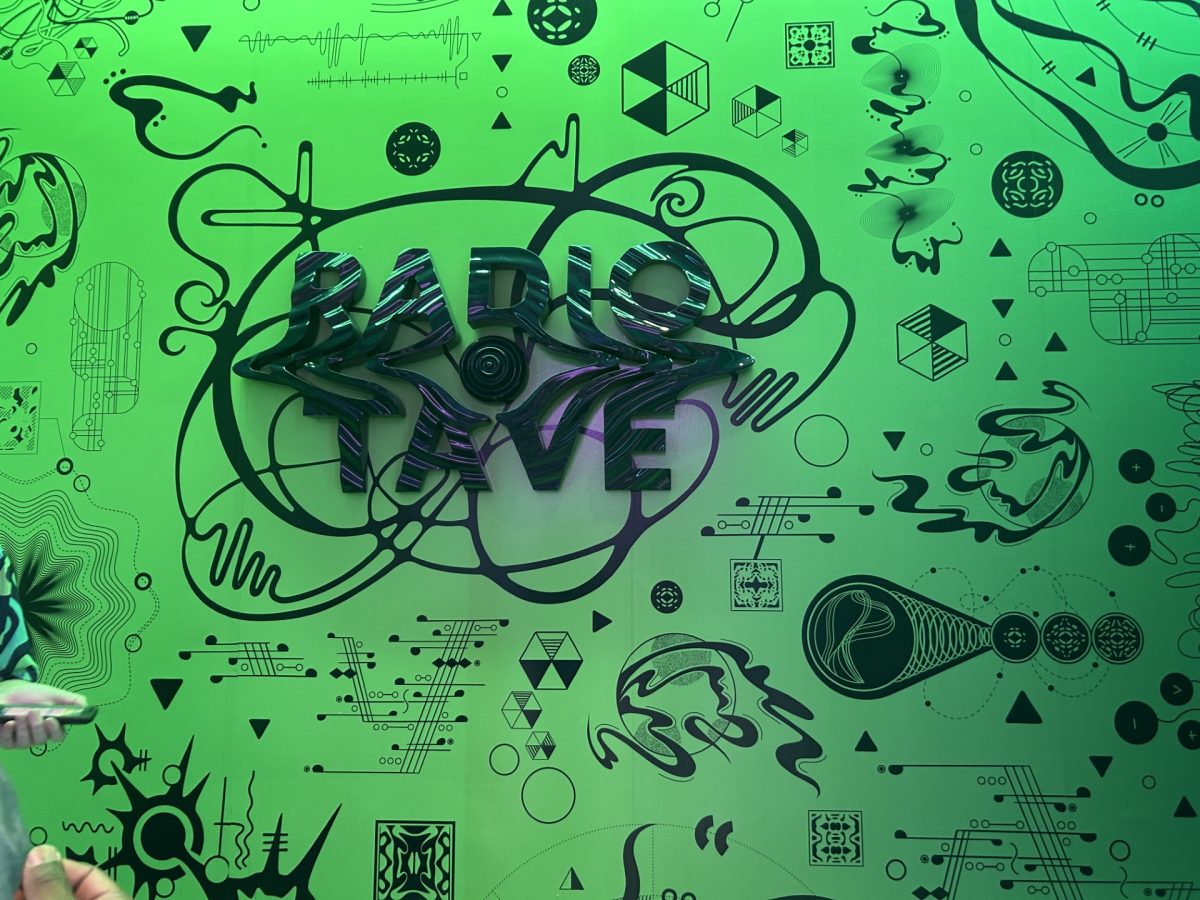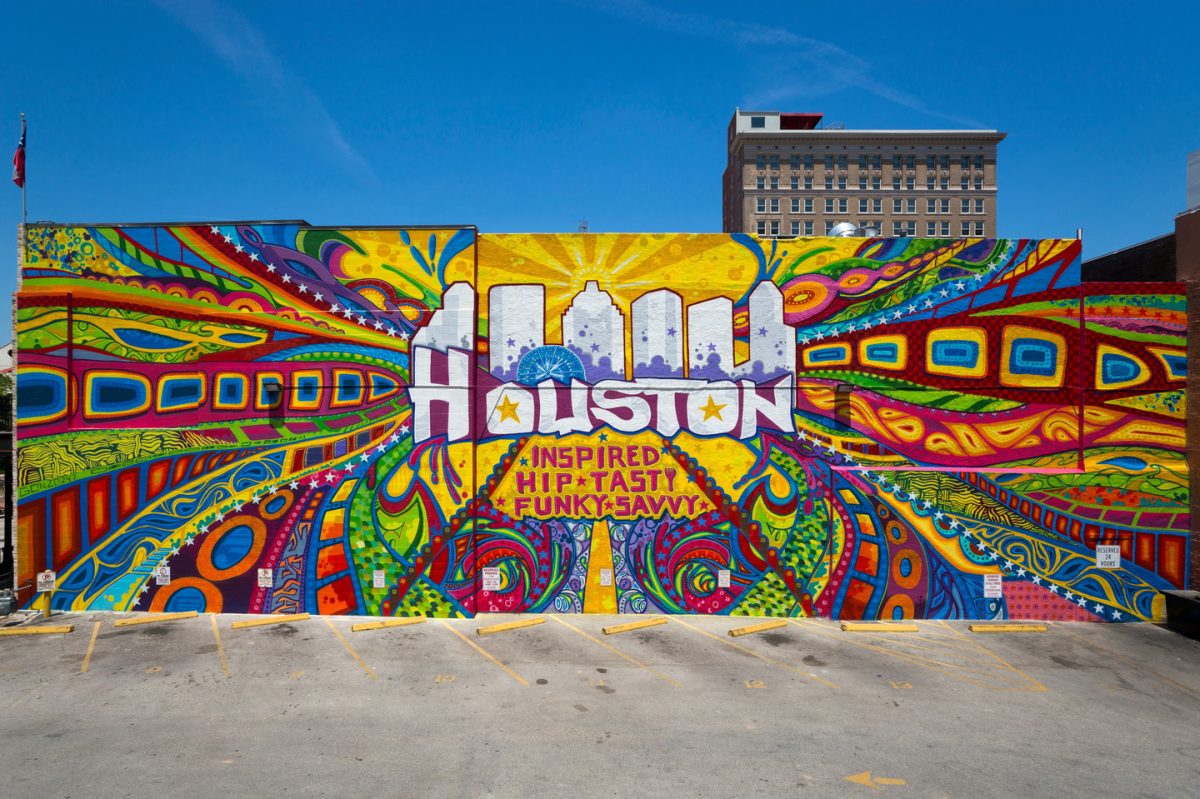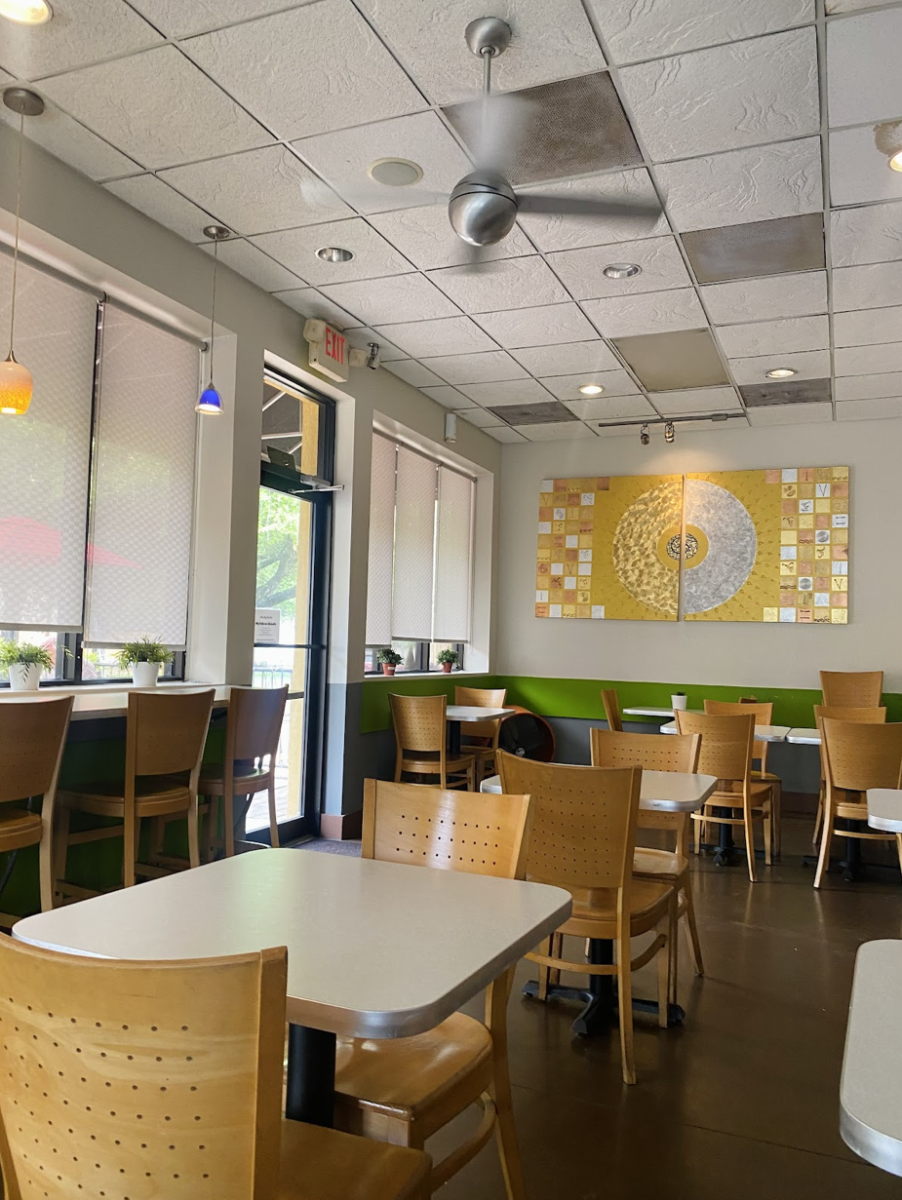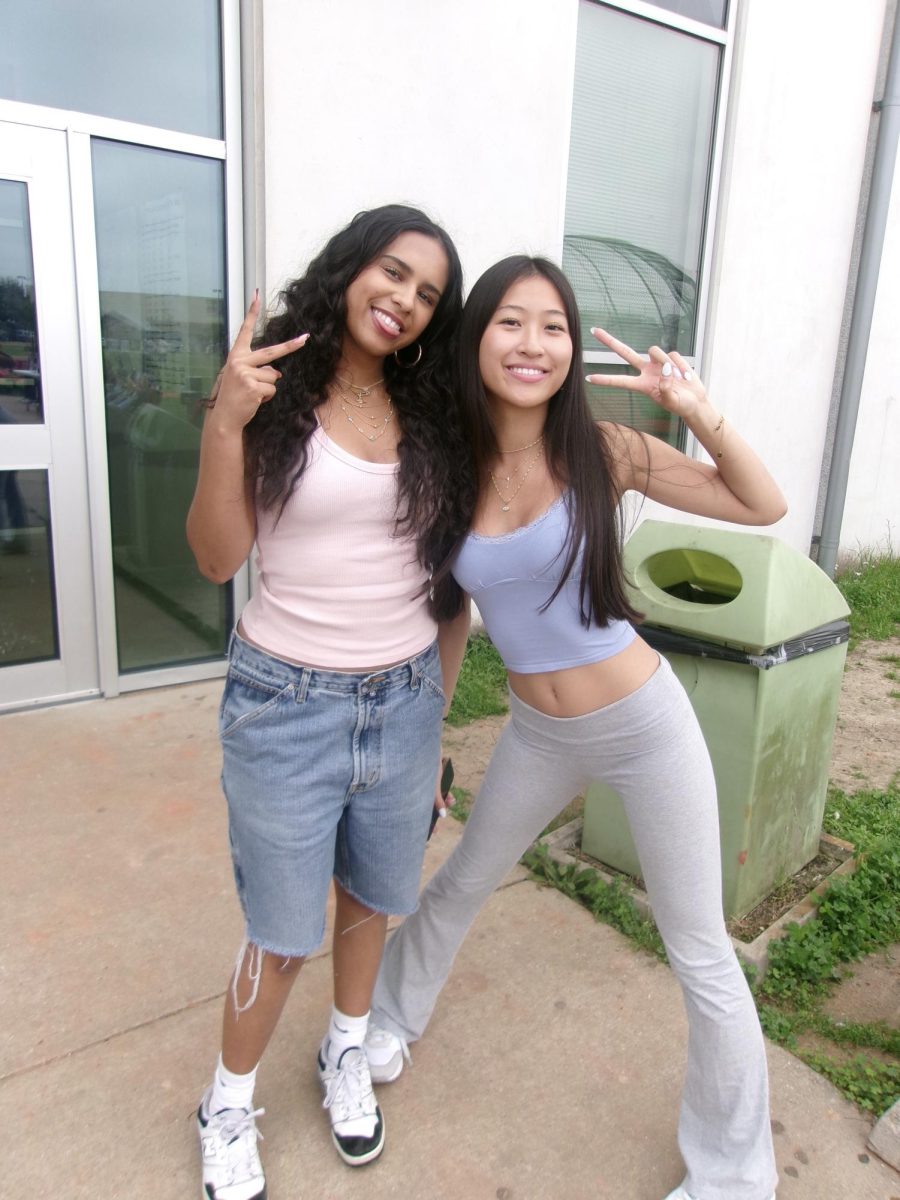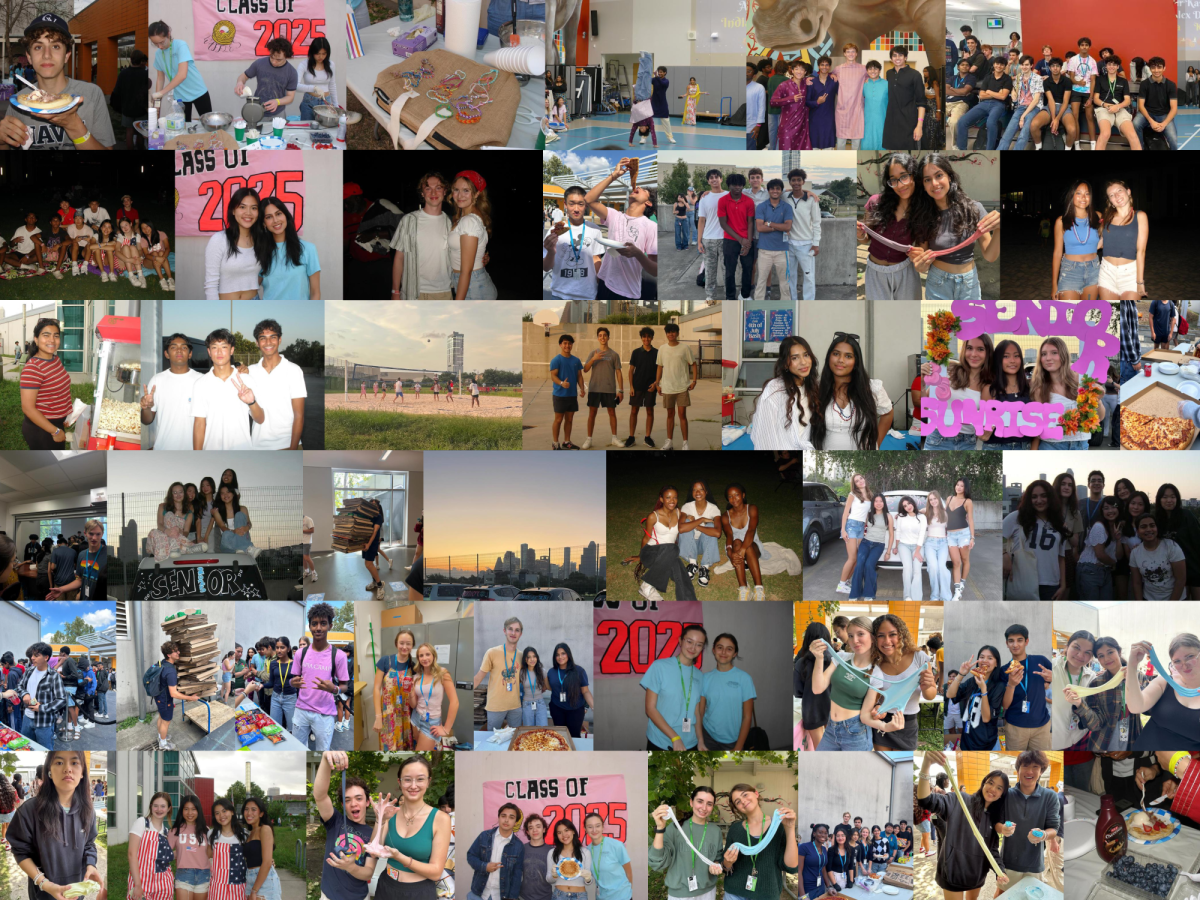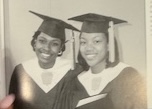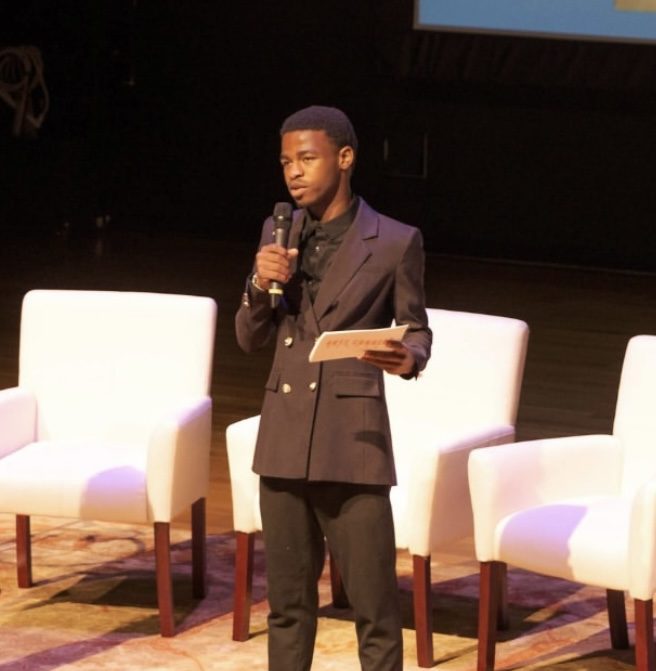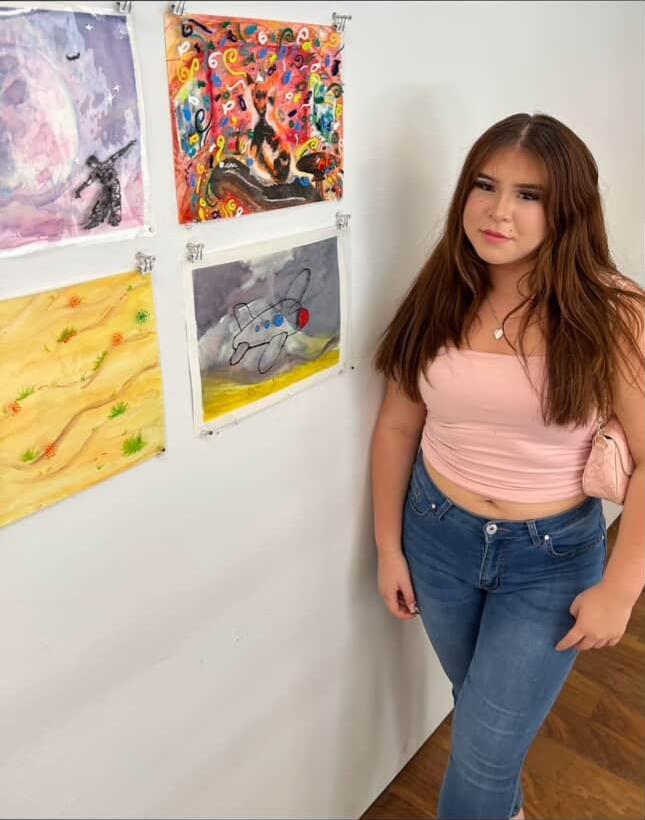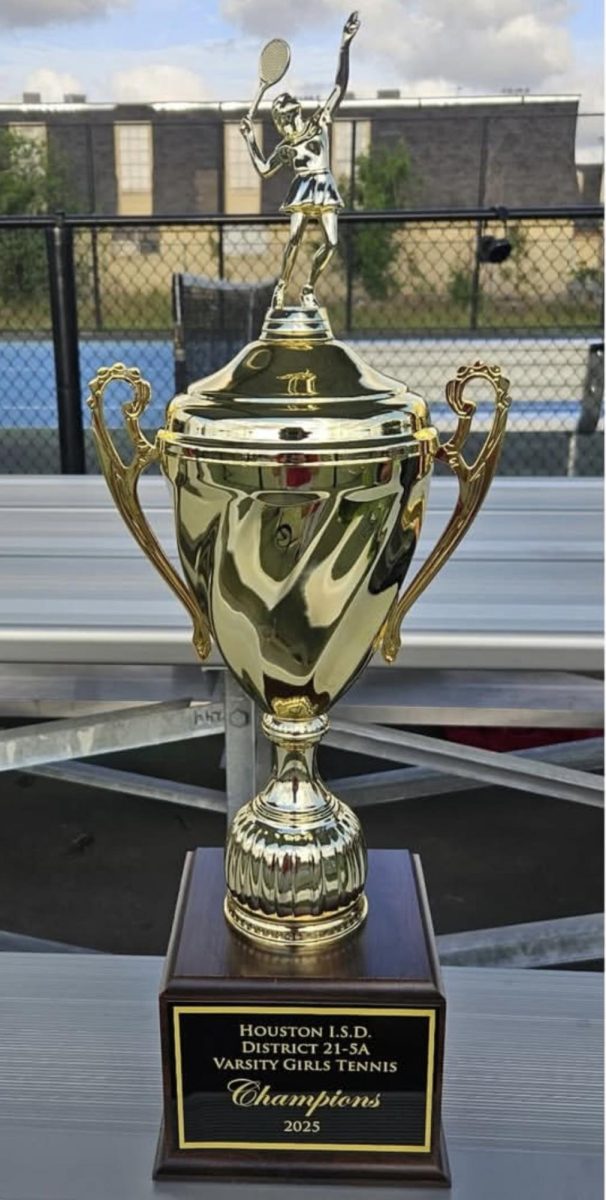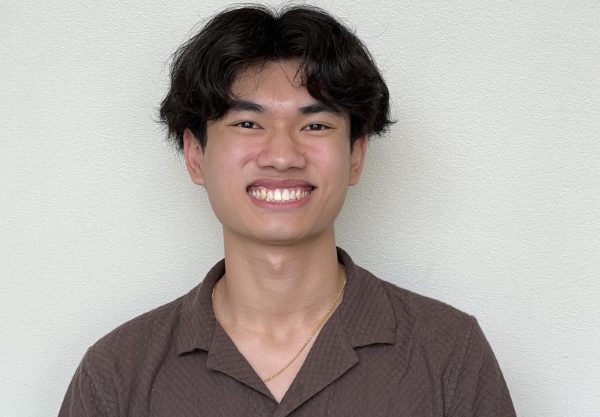Klaridy Miller
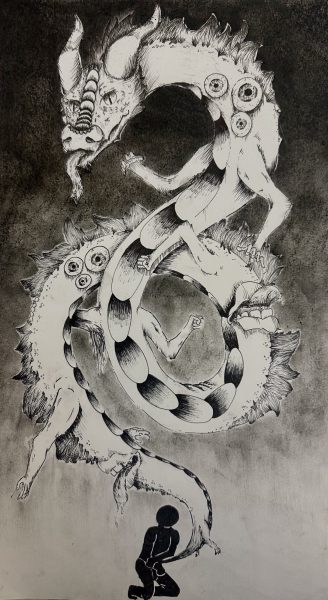
Sitting in the corner of a lively classroom, junior Klaridy Miller overlaps a paint-splattered canvas with conversations crowding her workspace. In her AP Art Portfolio, Miller’s work focuses on the concepts of dragons, attempting to create a narrative of maturing throughout childhood through abstract drawings and multiple mediums.
“When you grow up there’s this physical change element, so I wanted to put a spin on that and this almost body horror aspect of it,” Miller explained. “[One of my works] has an Easter-inspired dragon that had a ton of limbs coming out of it. I know it sounds really weird, but I looked at films and used a tattoo style that utilizes hatching and ink which almost looks like line art instead of [a painting].”
Miller’s unique visual style in her art emerged after she explored ideas of transformation, which she decided to represent through several techniques.
“I used acrylic paint, color pencil, oil pastel, puffy paint, fabric paint, a little bit of watercolor … I was all over the place because I wanted to show childhood evolution from using bright to dull colors,” Miller said.
Although Miller values working alone, the AP Art classroom’s collaborative spirit creates an environment where conversations are commonplace.
“We endearingly call [the class] AP Yap,” Miller said jokingly. “We talk quite a bit, but it’s really nice because we can bounce ideas off of each other.”
In her portfolio, Miller decided to broaden her interpretation of her theme of growing up to include more experimental works.
“Some pieces I submitted weren’t fully developed,” Miller said. “But that was the point. I wanted to include ideas that didn’t feel fully developed because that’s part of the creative process and goes with my theme of growing up in childhood.”
In her portfolio, Miller focused on themes ranging from anxiety and responsibility to loss of innocence—represented through a series of symbols.
“I use a lot of metaphors like the mockingbird for childhood or Snow White’s apple for innocence lost,” Miller explained.
In the end, Miller hopes that when others look at her AP Art portfolio, they realize that art doesn’t require perfection.
“Even if you’re not necessarily super good at art, I hope people know that they can create pretty much anything. Miller said.
Eden Harris
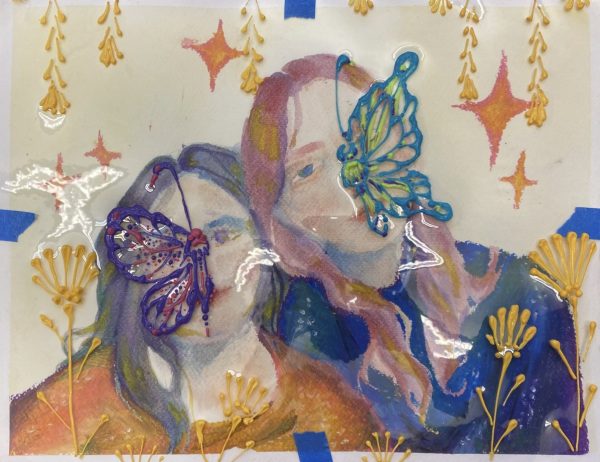
With each brush stroke, from water palette to water cup, junior Eden Harris carefully crafts her AP Art Portfolio utilizing a variety of mediums and techniques.
“The idea [for my AP Art Portfolio] is how you see a lot of the figures [in drawings], and usually you can’t see their eyes,” Harris said.
Harris credits AP Art Teacher Luis Perez for helping her brainstorm the idea for her portfolio through a series of activities that allowed her.
With each brush stroke, from water palette to water cup, junior Eden Harris carefully crafts her AP Art Portfolio, primarily utilizing mediums of watercolor and acrylic paint.
“The idea [for my AP Art Portfolio] is how you see a lot of the figures [in drawings], and usually you can’t see their eyes,” Harris said.
Harris credits AP Art teacher Luis Perez for helping her begin the brainstorming process during the first semester. One assignment, involving randomly chosen index cards with prompts, sparked her initial ideas—including the concepts of fairies, masking and painting as a medium. While the idea for faries didn’t stick, the idea of concealment and masking became the central theme of her portfolio.
“Initially, my ideas had to do a lot with fairies, but then it kind of bridged into more general things like figures and masking,” Harris said.
Harris began her sustained investigation in the second semester, sticking with the same concept she had explored earlier. One of the pieces Harris is particularly proud of is a work she created during her time in Art 3.
“I like [the piece Art 3 piece] because it has some interesting poses that are a little hard to do,” Harris said. “And also, it’s an image of me and my friends, so that’s nice too.”
Harris primarily works with watercolor and acrylic because of their ability to layer.
“You can add different aspects of color without having to mix the specific color you want when you put it down,” Harris explained. “You’re not just limited to the color that comes in the palette.”
Rather than working on her art at home, Harris preferred the social environment of her art class.
“I did all of my work in class,” Harris said. “Our group was loud, of course, but that’s just how we liked to work on our art.”
Harris’s style draws from her early interest in drawing people, which began in middle school with anime. Over time, her work shifted toward a semi-realistic style influenced by artists she followed online.
“I would see other artists’ work and think ‘I like this aspect [of their artwork]’ and I would draw my art in the same style,” Harris said, laughing. “So I guess that’s just how my style evolved … by taking creative inspiration from other artists.”
While some artists like to draw aspects of themselves in the pieces of art they create, Harris takes a more observational approach.
“I don’t think I put myself in [my art],” Harris said. “I’m drawing something that I like to see. I don’t like to draw myself into the piece.”
Despite her dedication to the craft, Harris doesn’t plan on pursuing art as a career. “I like to draw according to what I think,” she said. “If there was a customer, I’d have to change things for them—and I don’t know if I’d like that.” For now, she sees art remaining a personal passion while she considers a career in a STEM field.
Gloria Manzano
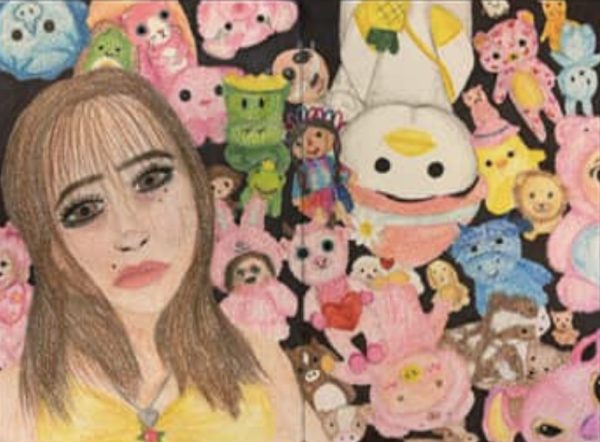
Carefully layering colored pencils to craft intricate details, junior Gloria Manzano builds her AP Art Portfolio around a theme that many can resonate with: the longing to return to childhood.
“[My portfolio theme] is about how, when you’re older, you want to be a kid again,” Manzano said. “It is the idea of how people keep little pieces of their childhood with them, like stuffed animals or coloring books.”
Although she admits her theme was not very developed in its early stages, feedback from AP Art teacher Luis Perez pushed her to deepen her concept. Manzano originally developed the idea over the summer, drawing inspiration from TikTok artists.
“I saw a lot of people talking about how their culture or identity changes as they grow up,” Manzano said. “I thought about going backward [about that idea] instead.”
One of the pieces she’s most proud of features a girl surrounded by stuffed animals. The piece was inspired by a failed photography assignment from the year prior, which she then repurposed.
“I didn’t like how [the picture] came out in photography,” Manzano admitted. “But drawing it felt like it worked a lot better.”
Manzano is primarily drawn to colored pencils when creating her pieces of art.
“You can erase things if you need to. It gives you more control. With painting, especially with oil, it can get messy” Manzano explained.
When it comes to the environment she likes to work in, she prefers a mix of background TV and music depending on the piece she is working on.
“I’ve been watching Desperate Housewives [while working on my AP Art portfolio]” she said while chuckling. “But when I’m in class, I just put on music instead.”
Manzano attempts to utilize her portfolio to tell a story, rather than input her own experience.
“[The portfolio] starts with a young girl wanting to grow up, and ends with a grown woman wishing she could go back,” Manzano explained.
Manzano states that she takes inspiration from surrealist imagery, mural art and works from artists like Frida Kahlo.
“I don’t have the patience for realism,” she said. “I like art that’s colorful and cartoony, not super detailed.”
Going forward, Manzano has short plans for her art career.
“I don’t want to go to art school or anything like that,” Manzano said. “I want to be an attorney. But an attorney who can draw? That’s pretty cool.”
Coslee Price
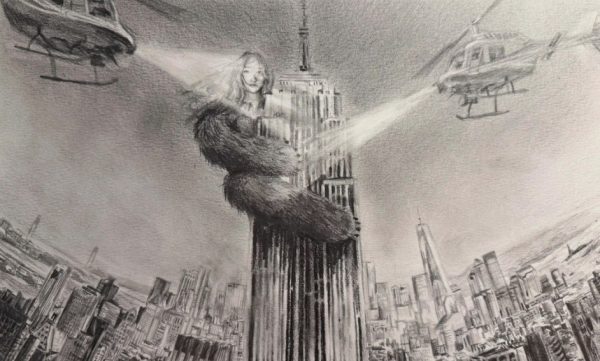
With a blend of symbolic imagery and mixed media experimentation, junior Coslee Price uses her AP Art Portfolio to explore the deeply personal feelings of the anxiety of being perceived by others.
“My theme [for my AP Art portfolio] was originally about my anxiety of being perceived,” Price said. “But over time, it shifted into how I perceive myself, rather than just how others see me.”
The theme for her portfolio gave Price space to express emotional vulnerability through visual metaphors. One of her favorite pieces features the decomposition of organic objects like fruits and vegetables to reflect how people react to imperfections.
“You see one bruise on a fruit, and people avoid it. That’s how I feel about my imperfections. like one flaw can change how someone sees me entirely,” Price explained.
Price says she chose the theme because she wanted something she could stay invested in for the entire year-long creative process.
As she continued to work on her portfolio, her approach to art began to evolve. In early pieces, she utilized standard studio techniques but later grew to utilize more abstract and experimental mediums.
“I started getting more comfortable trying new things,” Price said. “At first, [my art] was all about other people’s perceptions of me. But then, it became more about how I see myself.”
While working on her art, she enjoys listening to music. Specifically, a Brazillian genre of music called Bossa Nova.
[The music] helps me focus. It’s hard for me to do art if there’s too much going on around me,” Price said.
In terms of what influences her art style, Price credits Pinterest, music and mood.
“I think music is a big inspiration,” Price explained. “It affects how I feel, and that changes what I create.”
Price admits that staying motivated through academic stress and creative blocks was one of her biggest challenges.
“Getting stuff on paper has been hard,” she said. “Not just the ideas but finishing [art pieces] while also studying for other classes.”
What she hopes viewers take away from her work is simple.
“I hope [my portfolio] lets viewers understand me in a better way,” Price said.
“I hope people see the theme and feel like they understand me a little more,” Price said. “Because I think a lot of people go through the same thing.”
Kelvey Flinn
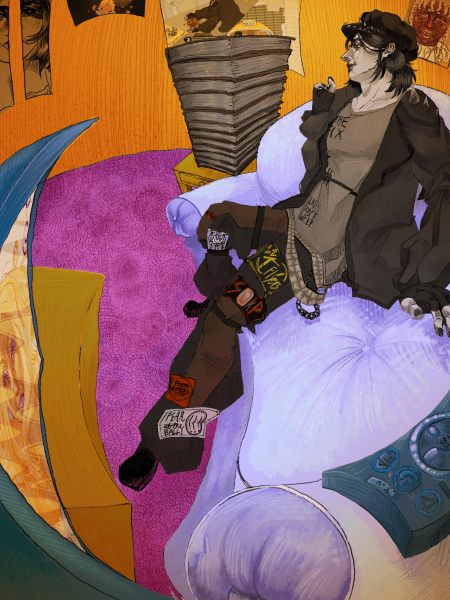
Through expressive digital and traditional artwork, junior Kelvey Flinn uses their AP Art Portfolio to display the emotional toll of overworking for the things you love.
“My portfolio was about overworking while still having passions,” Flinn said.
For Flinn, the pressure to meet artistic goals often clashed with the joy of creating was where the theme for the portfolio stemmed from.
One of the pieces they’re most proud of features a character surrounded by vibrant color, contrasted with a black-and-white figure peering at a stack of books but reaching for a TV remote.
“I worked hard on the perspective in this one. The characters are in a fun environment, but they’re stuck focusing on work causing them to ignore everything else,” Flinn explained.
For their portfolio, Flinn utilized a variety of mediums that helped them step out of their comfort zone.
“I mainly do digital art,” Flinn explained. “But lately I’ve been experimenting more with traditional media, especially oil pastels.”
Their workspace is filled with creative energy fueled by music and focused time.
“I like listening to background stuff while I work [like Hatsune Miku],” Flinn said. “But sometimes, I just need to be in the zone.”
Much of the portfolio is tied to an original visual novel Flinn is developing, with each piece acting as a concept or moment from the story.
“Drawing scenes from [my visual novel] helped me practice and stay motivated,” Flinn explained.
For Flinn, art is not just an activity but a lifeline.
“I tie my art to my self-worth,” Flinn said. “Art really keeps me going.”
Their style is inspired by classical influences, particularly Michelangelo.
“I love Michelangelo. I do a lot of face studies and sketches from reference images. It helps me improve and stay connected to the fundamentals,” Flinn said ecstatically.
Despite their passion, completing the portfolio didn’t come without obstacles. Flinn struggled with time management, admitting that procrastination and distractions got in the way.
“I spent too much time [on my first piece],” Flinn said. “I didn’t work at home much, so I ended up grinding out like 3 pieces in the last month.”
Even so, they rarely experienced burnout thanks to their love for their characters and the story they’re building with their visual novel.
Flinn has a clear message that she hopes everyone takes away.
“It’s okay to work toward your passions and academics, but you also need to know when to take a break,” Flinn said.
Eriko Fujita
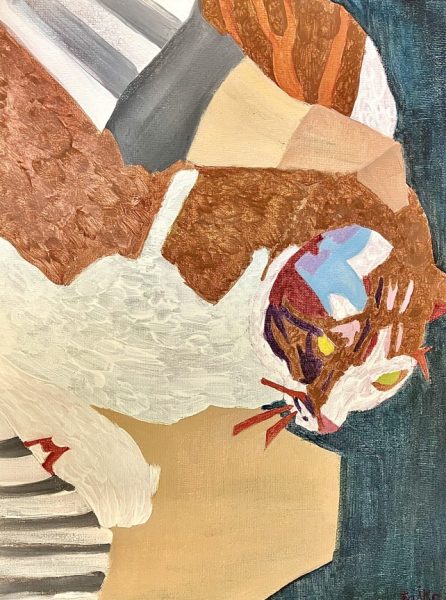
With her own personal muse, junior Eriko Fujita shaped her AP Art Portfolio on a short and sweet topic.
“[The portfolio] is about my cat, which I like,” Fujita said simply.
While the concept might seem simple, Fujita utilizes abstraction and artistic interpretations to convey emotions.
“One of my abstract pieces was shaping my cat with cubes,” Fujita said.
Fujita works primarily in acrylic paint for its texture and vibrancy.
“[The acrylic paint] lets me build layers and add texture, especially for the fur,” Fujita said.
More finer details began to emerge as she developed her portfolio.
“I really focused on the fur, adding texture to it mainly,” Fujita said.
Fujita uses lighter tones and abstract palettes to reflect her feelings and emotions in each piece.
“The use of color kind of shows how I feel,” Fujita explained.
Fujita’s style isn’t tied to a single artist, but she draws inspiration from museum visits and enjoys exploring a wide range of styles. Still, one painter stands out.
“I really like Van Gogh,” Fujita said. “But in general, I get inspired just by looking at art in museums.”
The biggest challenge in creating her portfolio wasn’t the painting itself, but rather making sure everything tied together. Organizing her work into a coherent series as deadlines approached.
“I think just making sure the pictures connected was the hardest part,” Fujita admitted.
Like many AP Art students, Fujita experienced some creative fatigue during the long process.
“There was a little burnout because [the course] is such a [long project],” Fujita said.
Despite the time crunch and challenges, Fujita hopes her audience connects with her pieces on an emotional level.
“I want people to feel how I feel when they look at my art,” Fujita said.
As for the future, Fujita doesn’t plan on turning art into a career.
“[Art] is just a hobby,” Fujita said. “But it’s something I’ll keep doing.”


